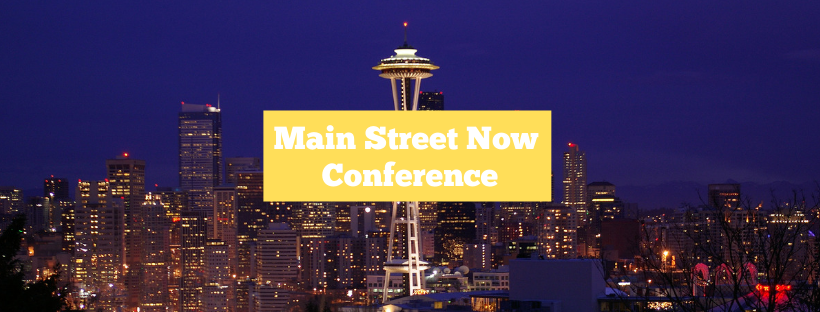
ELGL member and City of Estacada, Oregon Economic Development Director Matt Lorenzen is attending the Main Street Now conference and he’s sharing everything he’s learning in a blog series and on ELGL social media channels.
At the conference I attended sessions on topics ranging from historic tax credits, to zoning reform, to destination businesses. Lots to learn. Lots to follow up on. If you want to see what other topics were covered as well as who the subject matter experts are on those topics, check out the digital conference program.
Slides and show notes will be uploaded over the coming weeks, so check back periodically. Every community has different assets and different challenges. Dig into the topics that are relevant to your Main Street or commercial district.
As I have already noted in a previous blog post, Ed McMahon spoke to civic leaders during the 2019 Main Street Now conference. He began his remarks by stating that change is inevitable.
“There are really only two kinds of change in the world: planned change and unplanned change.”
You may be thinking this is simply a statement of the obvious, and it is, but sometimes the most obvious truths are the very ones we neglect to acknowledge.
As I walk away from the conference, here are the most salient points I think civic leaders and main street directors and board members ought to consider as they seek to orchestrate and effect positive change in their communities: (Adapted from another article.)
- Have a vision for the future. This can be a vision document, but doesn’t necessarily have to be something formal, especially if you’re just getting started with revitalization efforts. Sometimes “strategic doing” can be more powerful than costly and time-consuming strategic planning.
- Inventory community assets. Capitalize on and build upon what already exists rather than trying to artificially create something from scratch.
- Build plans around existing assets.
- Use education and incentives, not just regulation, to generate good (re)development. It’s one thing to prevent garbage development; it’s a whole other thing to promote and incentivize what your community needs and wants. Do both.
- Get comfortable with saying, no. “Communities that will not say no to anything will get the worst of everything,” says Ed. He’s right, and we know it because we’ve all seen it.
- Cooperate with neighbors for mutual benefit. Thinking of economic development, tourism development, talent attraction, etc. as a zero-sum game is an antiquated and inappropriate mindset. Work with regional partners and neighboring communities to build an attractive region that can’t be ignored. Your downtown is just one piece of a bigger picture.
- Do not underestimate the impacts of design standards. The development and redevelopment that occurs today will likely be with your community and your Main Street for decades to come, possibly longer. Find ways to ensure that its aesthetic is classic, timeless, and of high quality. Protect historic assets and architecture.
- Leadership and participation are crucial. I am biased in this opinion, but I believe if a city/community is serious about downtown/commercial district revitalization, they must find a way to hire a talented, passionate, and diplomatic full-time staff person. Volunteers are absolutely critical to long-term success, but volunteers are frequently limited in their time, energy, and capacities. The worst thing a community can do is to say they support the efforts of a Main Street program, while doing nothing to show that support.
- FUND. THEM. Help them organize. Especially in the early years. The right staff-person can dramatically expedite and shape the revitalization of a downtown. The ROI will come, but it will require the right hire, and some patience. That said, it can’t be a one-person show. You’ll never get the outcomes you want without participation, broad and deep, from property owners, business owners, investors, residents, elected officials, and anyone else with a vested interest in revitalization. Invite everyone to the party.
Want to talk more about Main Street and economic development? Find me on LinkedIn. Let’s trade ideas and nerd out!
